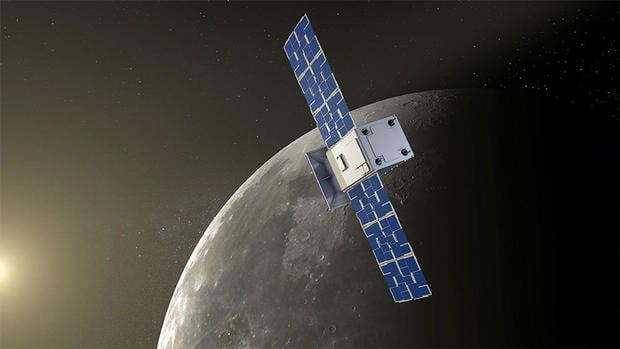
NASA announced on Tuesday it has lost radio contact with the moon-bound CAPSTONE spacecraft launched last week to test an unusual lunar orbit.
According to NASA, the loss of communications occurred on July 4, 2022 while CAPSTONE was in contact with the space agency’s Deep Space Network (DSN) tracking and communication system designed to support deep space missions.
The blackout came after the spacecraft separated from its Rocket Lab Photon upper stage booster, which had completed seven engine burns over six days, sending the robotic probe out of low-Earth orbit and on a four-month ballistic trajectory to cislunar space.
CAPSTONE spacecraft has enough fuel onboard says NASA
In a press update, NASA said that the DSN had good trajectory data for CAPSTONE and that the spacecraft has enough fuel onboard to allow it to delay a necessary post-separation burn for several days while NASA engineers try to locate the problem and reestablish radio contact.
Launched on June 28th atop a Rocket Lab Electron rocket at the Rocket Lab Launch Complex 1 on the Mahia Peninsula of New Zealand, the 55-lb (25-kg) CAPSTONE satellite is on a nine-month mission.
CAPSTONE was launched to serve as a pathfinder for NASA’s planned Gateway lunar space station, testing an unusual lunar orbit that’s critical to the agency’s Artemis moon program.
The microwave-size CAPSTONE also is designed to measure the deep space radiation environment and test techniques that one day might determine a moon-orbiting spacecraft’s exact location without relying on Earth-based tracking.
The ballistic lunar transfer trajectory will carry it more than 800,000 miles from Earth— more than three times the 240,000-mile distance between Earth and moon—before it reaches a point in mid-November when it can slip into the planned “near rectilinear halo orbit,” or NRHO, around the moon’s poles.
But communications are essential and contact must be restored for the spacecraft to carry out its mission.
“If anything goes wrong (with the CAPSTONE mission), we have full plans that we can move forward with Gateway and really all of the Artemis missions that will use NRHO,” Nujoud Merancy, chief of the Exploration Mission Planning Office at the Johnson Space Center, said before launch.
“This data would be really valuable…but it’s not necessary or required to proceed,” she added, but, that said, it’s “always good to get more data and improve our modeling…we have full confidence in the data that will be happening either way.”
See all the latest news from Greece and the world at Greekreporter.com. Contact our newsroom to report an update or send your story, photos and videos. Follow GR on Google News and subscribe here to our daily email!



